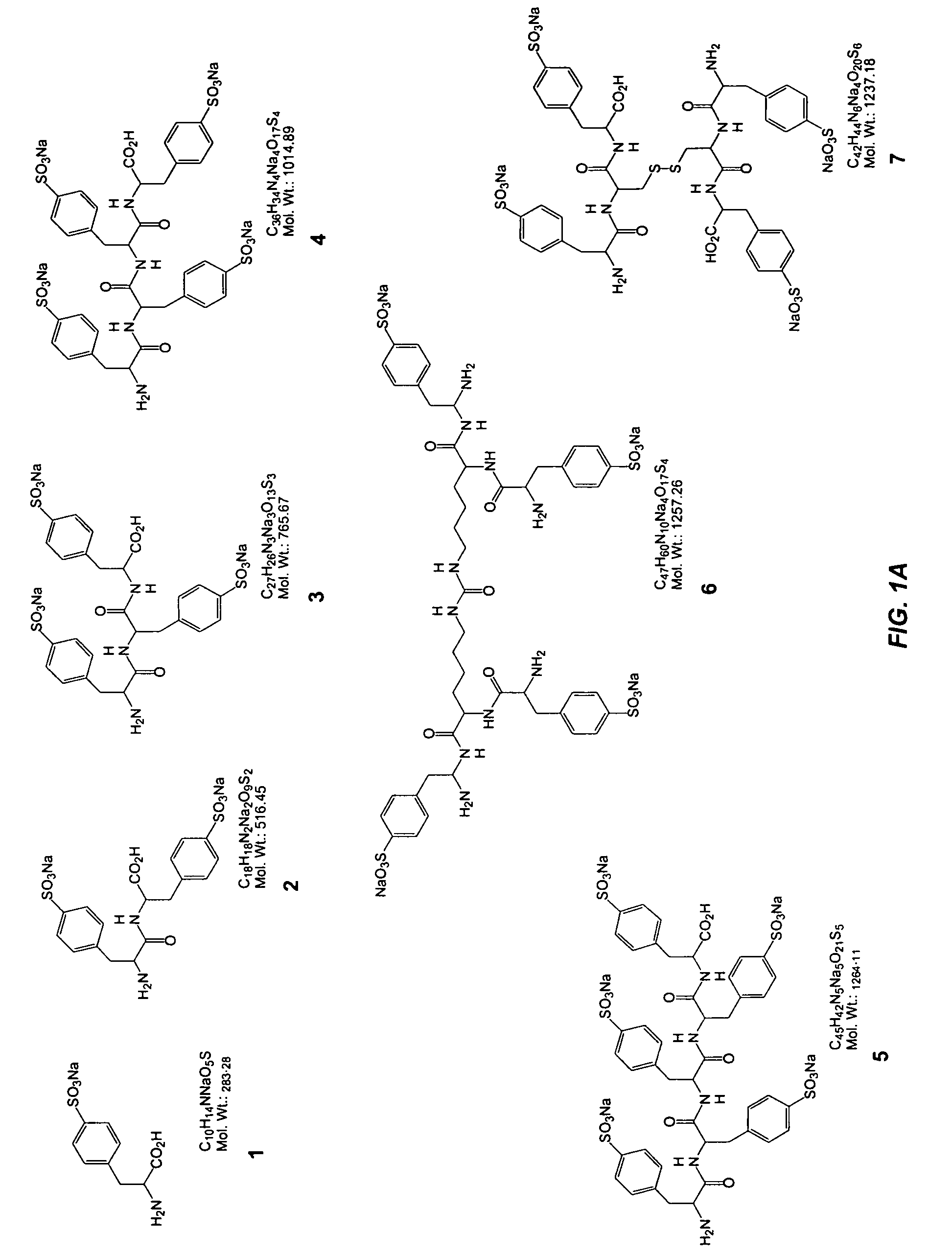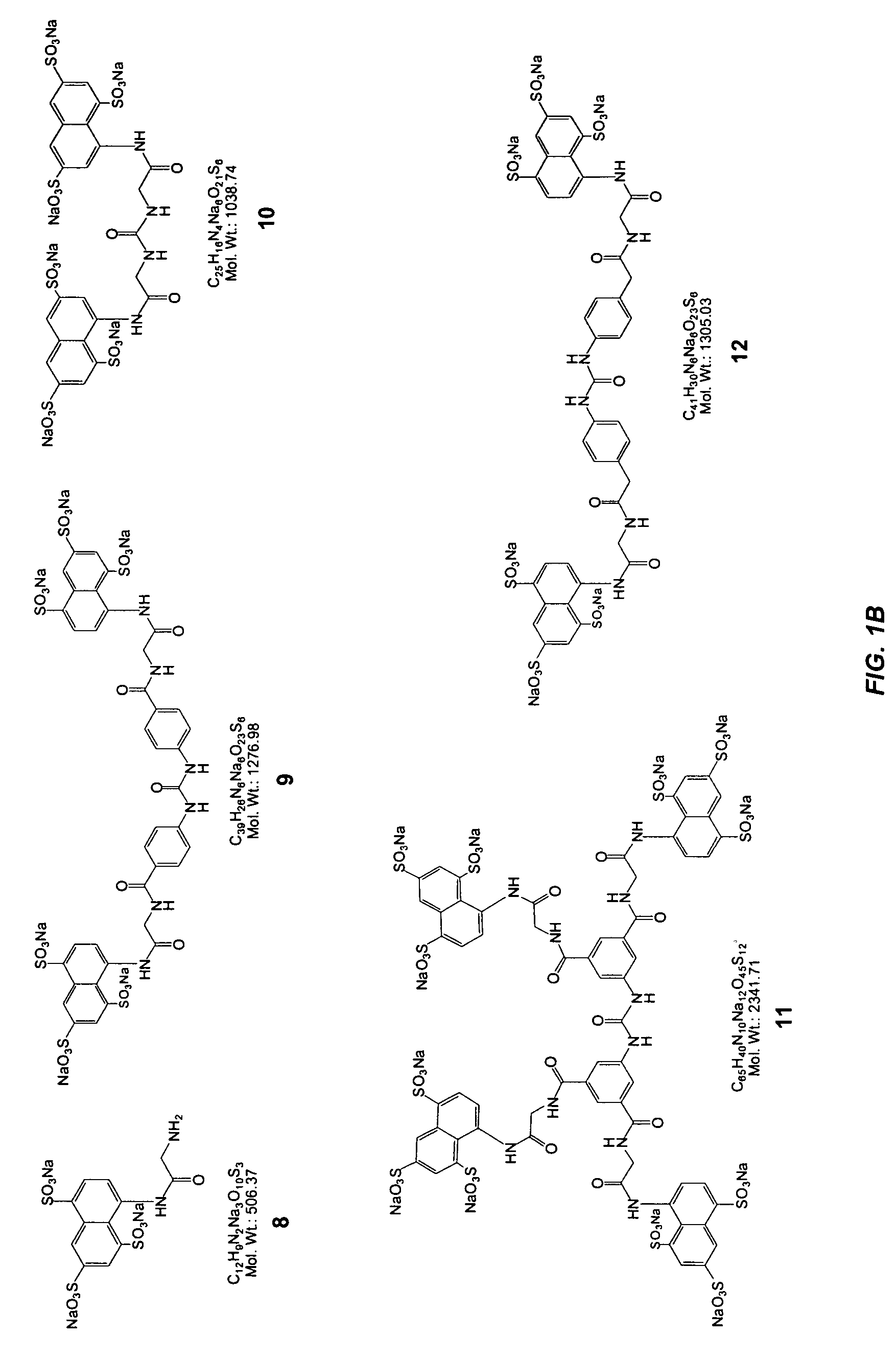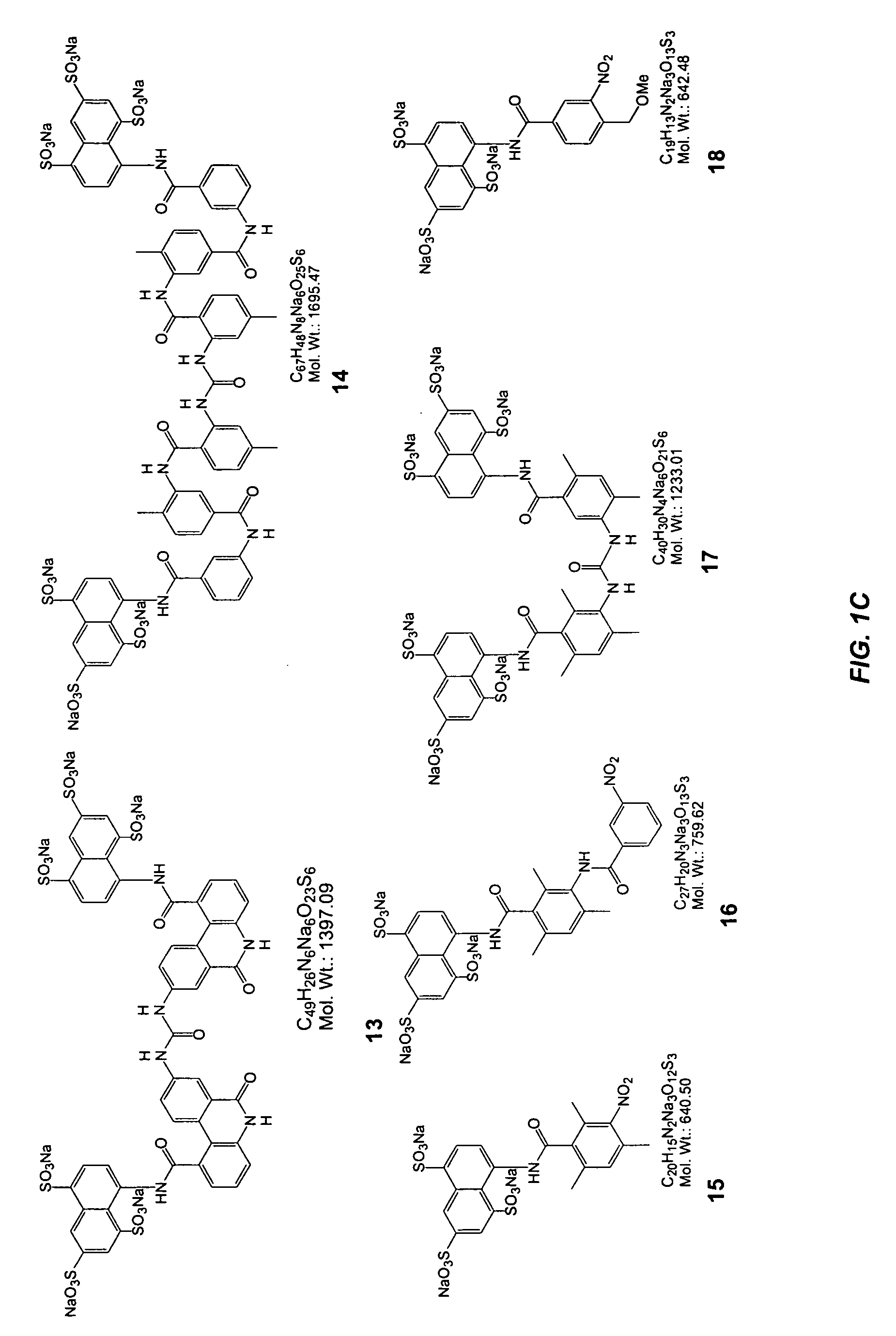Compounds and methods for inhibiting selectin-mediated function
a selectin and inhibitor technology, applied in the field of selectin modulators, can solve the problems of tissue damage instead of repair, unsuitable for drug development, etc., and achieve the effect of inhibiting thioglycollate-induced peritonitis
- Summary
- Abstract
- Description
- Claims
- Application Information
AI Technical Summary
Benefits of technology
Problems solved by technology
Method used
Image
Examples
example 1
Preparation of Representative Selectin Modulators
[0067] This Example illustrates the synthesis of representative selectin modulators or components thereof; specifically, compounds 39, 22, 60, 61, 62, and 65 (FIGS. 2 thru 7 respectively).
Synthesis of 39 (FIG. 2):
[0068] Suzuki Coupling
[0069] 4-(4,4,5,5-Tetramethyl-[1,3,2]dioxaborolan-2-yl)-benzoic acid (0.004 mol, 1 eq) and KOAc (0.012 mol, 3 eq) are placed in THF (25 ml) creating a slurry. PdCl2(dppf) (0.00012 mol, 3 mol %) and p-bromo-nitrobenzene (0.005 mol, 1.2 eq) are then added to the solution with stirring and the solution is heated gently to 80° C. After 6 hrs the reaction is complete by TLC (20:1 CH2Cl2 / CH3OH). The reaction mixture is evaporated to dryness, dissolved in CH2Cl2 (30 ml) and washed with distilled water and saturated NaHCO3. The resultant biphenyl compound is taken directly to the next step.
[0070] Carbodiimide Coupling
[0071] 4′-Nitro-biphenyl-4-carboxylic acid (0.004 mol, 1 eq), dimethyl amino pyridine (1 ...
example 2
Inhibition of P-Selectin by BASA Analogues
[0100] This Example illustrates the ability of various BASA analogues to inhibit P-selectin function in ELISA and cell-based assays.
Ligand Binding Assay for P-Selectin
[0101] The neoglycoprotein SLea-HSA (IsoSep AB, Tullinge, Sweden) is incubated in wells of a 96-well microtiter plate (Falcon probind) at 100 ng / well in 50 mM Tris, 0.1 5M NaCl, 2 mM CaCl2, pH 7.5 (TBS) overnight at 4° C. After the coating incubation, the wells are blocked with 100 μL / well of 2% bovine serum albumin (BSA) at room temperature for 2 hours.
[0102] Test compounds are serially diluted in a second 96 well plate (Plate 2; U-bottomed, low binding plate) in Dulbecco's PBS, pH 7.0 (DPBS, Biofluids, Inc.). Plate 1 is washed five times with DBPS and the contents of plate 2 are transferred to plate 1. An equal volume of P-selectin / hIg chimera (GlycoTech Corp.) is added to the wells at 4 μg / ml in 1% BSA, DPBS, pH 7.0. and the plate is incubated at room temperature for 2 ...
example 3
Thioglycollate-Induced Peritonitis in the Mouse
[0112] Peritonitis is induced in the mouse by intraperitoneal (i.p.) injection of thioglycollate (time 0, t=0). Peritonitis was allowed to develop for 4 hours. Test compounds were administered by intraperitoneal injected at t=o. Antibody to P-selectin was used as a positive control and sterile saline was used as a negative control. After 4 hours cells were removed from the peritoneal cavity by a syringe and the number of neutrophils determined. Inhibition of thioglycollate-induced peritonitis in the mouse by the heterobifunctional compound (cmpd 65) containing both glycomimetic (cmpd 63) and BASA analogue (cmpd 64) is far better than either compound alone.
PUM
| Property | Measurement | Unit |
|---|---|---|
| pH | aaaaa | aaaaa |
| pH | aaaaa | aaaaa |
| pH | aaaaa | aaaaa |
Abstract
Description
Claims
Application Information
 Login to View More
Login to View More - R&D
- Intellectual Property
- Life Sciences
- Materials
- Tech Scout
- Unparalleled Data Quality
- Higher Quality Content
- 60% Fewer Hallucinations
Browse by: Latest US Patents, China's latest patents, Technical Efficacy Thesaurus, Application Domain, Technology Topic, Popular Technical Reports.
© 2025 PatSnap. All rights reserved.Legal|Privacy policy|Modern Slavery Act Transparency Statement|Sitemap|About US| Contact US: help@patsnap.com



